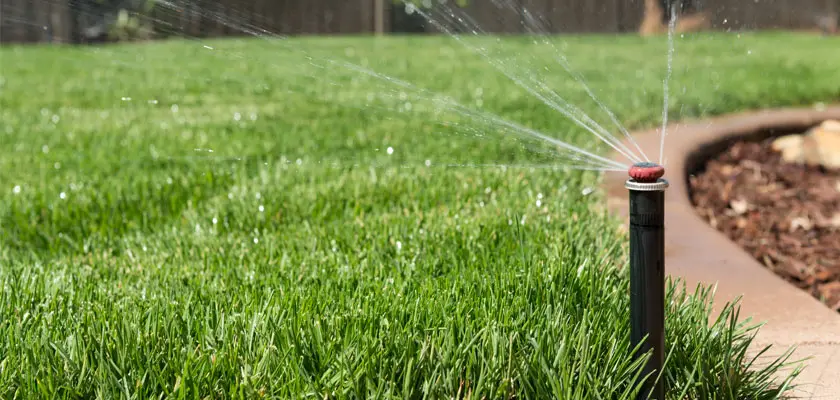
You probably change your HVAC filter once in a while. But have you ever looked deeper, literally? Knowing how to clean HVAC systems not only helps in preventing breakdowns. It also keeps your air fresh, your energy bills reasonable, and your equipment lasting longer.
Over time, dust, allergens, and gunk collect in hidden spots like coils, drain lines, and fans. If they are left unaddressed, they quietly slow your system down, raise your utility bills, and even mess with your indoor air quality.
Cleaning might sound like a big job, but with the right approach, it’s surprisingly doable. And once you have done it, you’ll feel the difference every time your heating or cooling kicks on.
This guide takes you through each step of HVAC cleaning, breaking the process into simple, manageable actions. These steps will ensure your system is running efficiently and your indoor air cleaner, season after season.
Ever wondered why HVAC cleaning should be on your home care list? Because it’s impossible to keep dust, dirt, and airborne particles out forever. Over time, they pile up and can impact both air quality and system efficiency.
The U.S. Department of Energy estimates that 25 to 40 percent of heating or cooling energy is wasted. A big reason is that dirty systems require more power to do the same job. Whereas a clean system doesn’t have to work as hard, which means you’ll spend less on energy and get more life out of your equipment.
Regular cleaning and HVAC maintenance can help lower your energy bills, improve airflow, and keep the air in your home fresher and healthier.
Not sure where to start with HVAC cleaning? Follow this step-by-step guide to clean your system with confidence and keep it working like it should.
Keeping air filters free from dust and dirt helps your HVAC system work at its best. The U.S. Environmental Protection Agency advises replacing filters every three months to keep dust, pollen, and other particles from clogging your system. But if you have pets or someone with allergies, you might want to replace them more often.
It’s good to know where your filters are located and how to handle them. Your A/C filter usually sits in the return air duct, which pulls warm air from your home into the cooling system. Always turn off the power before sliding out the old filter and replacing it with a fresh one.
For your furnace filter, switch off the power to the furnace first. You’ll usually find this filter behind the furnace door panel, near the blower. Pull it out and hold it up to the light. If you can’t see light through it, it’s time for a new one.
Know Your Filter’s MERV Rating and Size
It is equally important to check your filter’s MERV rating, as it shows how effectively it can trap airborne particles. Also, make sure you get the correct size. Most filters have their dimensions printed right on the frame.
Types of Filters and Maintenance
Filters come in different types, each needing a bit of different care:
Disposable filters need to be replaced as soon as they become visibly dirty.
Reusable or washable filters need a gentle wash with soap and water, then must be completely dry before reinstalling.
Your outdoor A/C unit cools your home by cycling warm air through its evaporator, compressor, and condenser. Since this unit sits outside, dirt, pollen, and fallen leaves often collect on and inside it, sometimes blocking the condenser fan despite the protective grille. So, regularly cleaning it becomes absolutely necessary.
First, make sure the unit’s power is off. Use a vacuum to clear dust and leaves from the exterior. Then, you should remove the grille on top using a screwdriver and carefully pull out the fan to check for any stuck debris.
Finally, rinse the condenser’s delicate fins with a gentle hose spray from the inside outward. Let it dry fully before reassembling and switching the power back on.
Air ducts distribute temperature-controlled air throughout your home, but dust and grime can accumulate inside them over time. This buildup can impact both the quality of your indoor air and the efficiency of your air conditioner. So, it’s good to clean them periodically.
Find the air vents in your rooms and carefully unscrew the covers. Place a paper towel between the vent and the wall or floor to stop the airflow. Then, switch your thermostat fan to “on” to help loosen dust inside the ducts.
The best process is to work on one vent at a time. Remove the paper towel, use a long-handled brush to loosen dust, and vacuum it up. Finish by wiping the vent with a damp cloth before screwing it back on. Keep going until all vents are clean.
Vents and registers often collect dust that can get pushed into your home’s air whenever the HVAC system runs. Keeping them clean improves airflow and helps your system work more efficiently, making your home comfortable quicker.
Use a vacuum with a brush attachment to clear dust and debris from the vents. After that, wipe the surfaces with a microfiber cloth to capture any remaining particles.
If you come across dirt that won’t budge, try wiping the vents with a sponge dampened in a simple water and vinegar solution. This keeps your vents clean without harsh chemicals.

The efficiency of your HVAC depends a lot on clean evaporator and condenser coils. When dirt builds up on them, your system has to push harder, using more energy and wearing down faster.
Start by removing the panel to reach the evaporator coils. Use a soft brush to clear away dust, then spray with a no-rinse coil cleaner to break down any stuck-on grime.
To clean the condenser coils outside, gently hose them down, being careful not to bend the metal fins. Steer clear of high-pressure water, as it may harm the coils and lower your system’s efficiency.
The blower motor plays a key role in pushing air through your HVAC system and into your home. When dust and debris build up on the motor and fan blades, that dirt can get recirculated in your indoor air. This can reduce air quality and system efficiency.
As part of learning how to clean HVAC systems properly, make it a habit to check the blower motor once a year. Remove the access panel and inspect the area for any dust or buildup. Use a soft brush or a vacuum with a brush attachment to gently clean the motor housing and fan blades.
Don’t forget to keep the blower motor lubricated if your system allows. It helps the motor run smoothly and prolongs its life.
The drain line is key to keeping your HVAC system free of water buildup. It carries away the condensation created when your system cools the air. If it gets clogged, water can back up, causing damage and mold growth.
To avoid problems, check your drain line regularly for blockages. Use a wet-dry vacuum to suck out any debris from the line’s end. Flushing the line every now and then with a mix of bleach and water helps prevent algae and mold from taking hold.
Keeping the drain clear protects your home from water damage and keeps your system running smoothly.
Once you have cleaned your HVAC system, you should take a moment to test it. Turn your thermostat to air conditioning and lower the temperature. If the vents blow cool air, your system is prepped for the heat.
However, if there is no cool air, it might be time to call a professional.
With a home warranty in place, you can get repairs handled without unexpected costs. Knowing how to clean HVAC systems in-house and testing them regularly helps avoid emergency fixes when the heat turns up.
For example, in Georgia, where summers can be brutally hot and air conditioning is essential, even a minor HVAC issue can quickly become uncomfortable. Along with scheduling repairs, you might also consider a home warranty in Georgia to help cover future HVAC problems and avoid high out-of-pocket expenses.

Your HVAC system is a vital part of your home’s comfort, and unexpected repairs can get costly fast. Select Home Warranty offers comprehensive coverage that helps protect your heating and cooling systems, including ductwork. Their plans take the stress out of pricey repairs so that you can enjoy peace of mind all year round.
Taking a step now to protect your HVAC means fewer worries and more reliable comfort when you need it most.
Cleaning an HVAC system typically costs between $250 and $1,000. The final price depends on factors such as whether it is a basic or deep cleaning and the complexity of your ductwork.
Routine maintenance and cleaning are necessary to ensure your systems work efficiently throughout the year. You should clean your HVAC coils annually or, if possible, twice a year if they are exposed to excessive moisture and dirt. Filters should be cleaned or replaced every 3 months, depending on the extent of usage and environmental concerns.
Your HVAC system may need cleaning if you spot signs like heavy dust buildup, musty or moldy smells, reduced airflow, or higher-than-usual energy bills. A sudden rise in allergy symptoms or recent home renovations can also be good reasons to schedule a duct cleaning.
Skipping air duct cleaning allows dust, allergens, mold, and debris to build up over time. This can lower indoor air quality, worsen allergies or breathing problems, strain your HVAC system, raise energy costs, cause musty odors, and even invite pests.

Don’t wait until it’s too late! Check out our current plans and get your free quote.

Household Tips
Air conditioning units require special attention as warm weather draws to a close. These are fickle appliances, and when something goes wrong, most of the time you’ll need an expert..

Household Tips
When it comes to keeping our homes safe, it’s important to keep the locks functional and unique. Changing or rekeying the locks on your home may be routine or required...

Household Tips
When you gaze across your lawn, the thought might occur: “Is it time to water my grass a better way?” For those of us who invest in our homes, the..